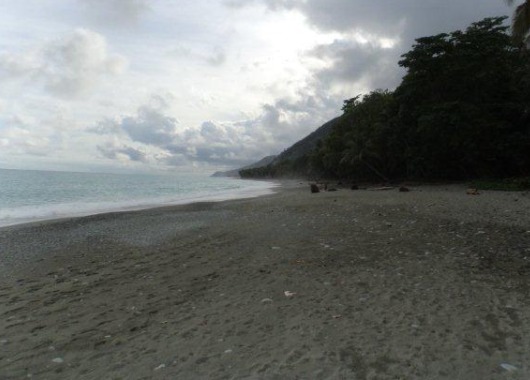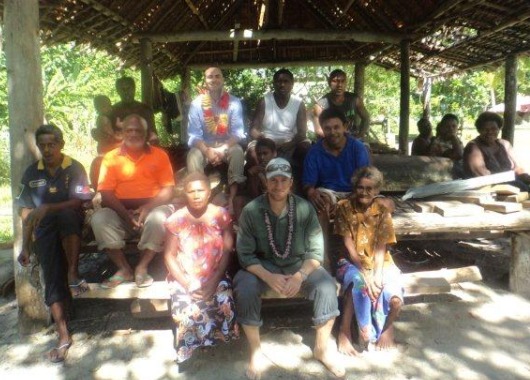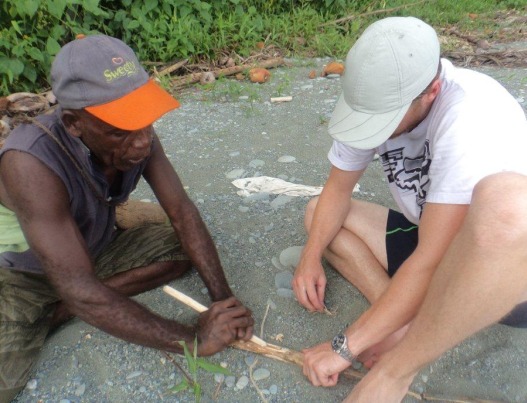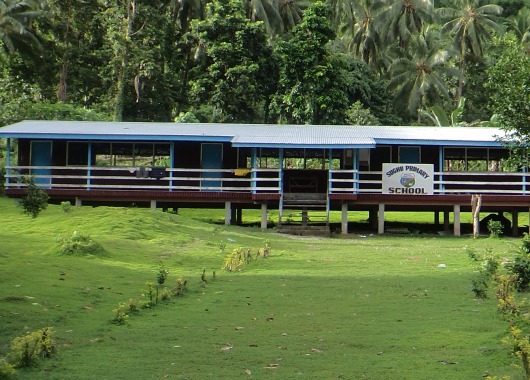25 June 2013
The Weathercoast: Raw, unrefined beauty
The first thing anyone tells you when they find out you’re going to the Weathercoast is to prepare for rain and rough seas. The Weathercoast stretches along the southern coast of Guadalcanal from Tangarare or Mbambanakira in the west (depending on who you ask), to Kopiu or Marau in the east.
This part of the country features some of Solomon Islands’ most dramatic landscapes. From brooding mountain ridges that look as if they are holding up the clouds, to ragged shorelines jutting from the sea, being battered relentlessly by wave after wave.

The Weathercoast.
But there are also many dozens of communities along the Weathercoast, eking out a living from subsistence farming and fishing, cut-off from Honiara, if not the rest of the country, by a total lack of infrastructure.
Last week, as part of the Australian High Commission’s community outreach program, Ben and I went to the Weathercoast to learn about these exceptionally resilient people. We were prepared for a bumpy ride, but were lucky enough to have perfect sunshine every day.
Our journey started in Marau, where we visited Are’Are-speaking people in Marau Sound, and learned about the tourism potential of the area. Looking out over the luminescent waters of Marau Sound, it wasn’t hard to imagine visitors from around the world rushing to enjoy their natural beauty.

Outreach in Marau Sound.
We then moved on to Kopiu, where we stayed up swapping stories with the elders in the village, and anyone else that was interested in a chat.
The next morning, we visited the headquarters of the Gaena’alu movement (formerly known as Moro) in Komuvaolu, where we learned about the complex history of the cultural movement and its big plans for the future.
In the afternoon, we pushed on to a community in Talise, where Ben and I learned some traditional bush skills, like how to start a fire without matches!

Making fire without matches.
After another night of stories with the youth and the elders on the porch of a traditional village hut, we had just enough time for a few hours’ sleep before starting the journey back to Marau station.
The thing that struck us the most was how close we were to Honiara, but how remote we felt from Solomon Islands’ capital. Out there in the Weathercoast, there are no roads, there are no taxis, no supermarkets, no restaurants, no hotels, no big business. None of the modern trappings that Honiara residents take for granted can be found in the Weathercoast.
Over the years, this has made the people of the Weathercoast self-sufficient, practical and strong. But it has also made them cooperative and generous. People in Weathercoast communities rely on each other to get things done. Whether it’s a house that needs to be re-built because of storm damage, or just a visiting banana boat that needs to be pulled onshore, everyone works together. It’s a part of the traditional culture that is still going strong, in spite of the suffering visited upon the area during the Tensions period.

Ausaid funded school in Talise.
Ben and I were also touched by how generous people were, despite the fact that they had so little. When we were hungry, people shared their fish with us. When we were curious, they shared their stories. When we were tired, they shared their homes.
In return, we shared the food and the stories that we brought with us, and handed out rice, school books and sports equipment to every community that we visited. And over the few days that Ben and I explored the Weathercoast, we were tremendously grateful for the chance to learn about some of the people this raw, unrefined and beautiful part of Solomon Islands, and the challenges they face every day.
On the way back, after learning as much as possible and in turn answering as many questions as we could, there was just one thing that kept going through our minds. How can we make a lasting difference to these people’s lives? They ask for so little, but deserve so much more.
Take a look at our Facebook page for more photos from the trip at Australia in Solomon Islands.
Mihai Sora
Second Secretary at Australian High Commission to Solomon Islands
